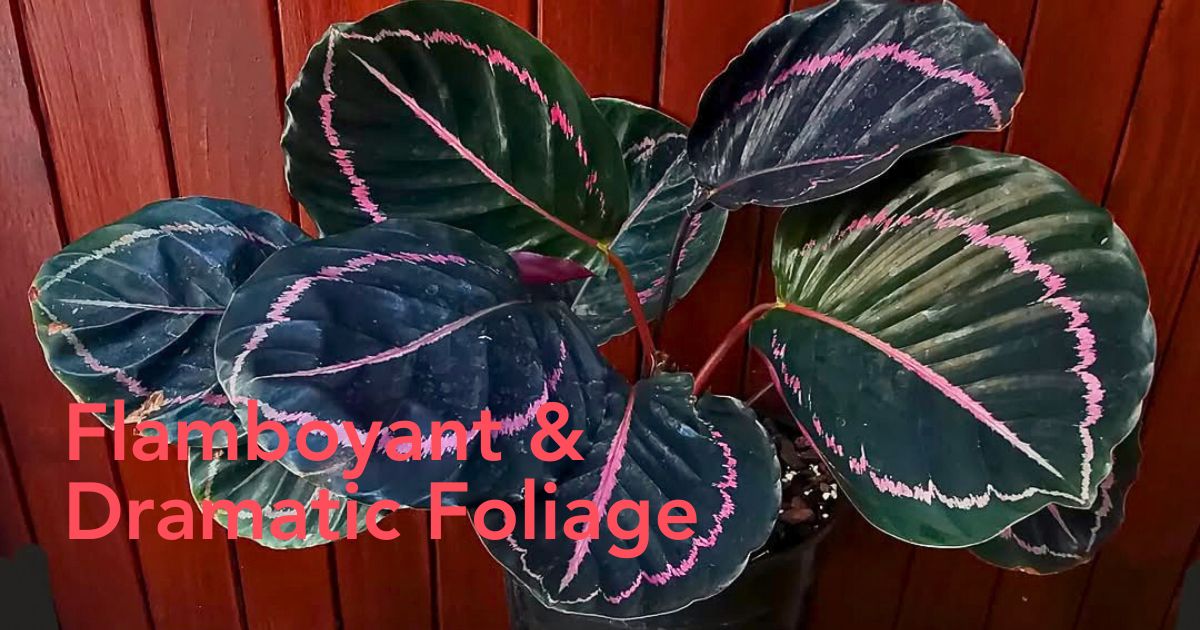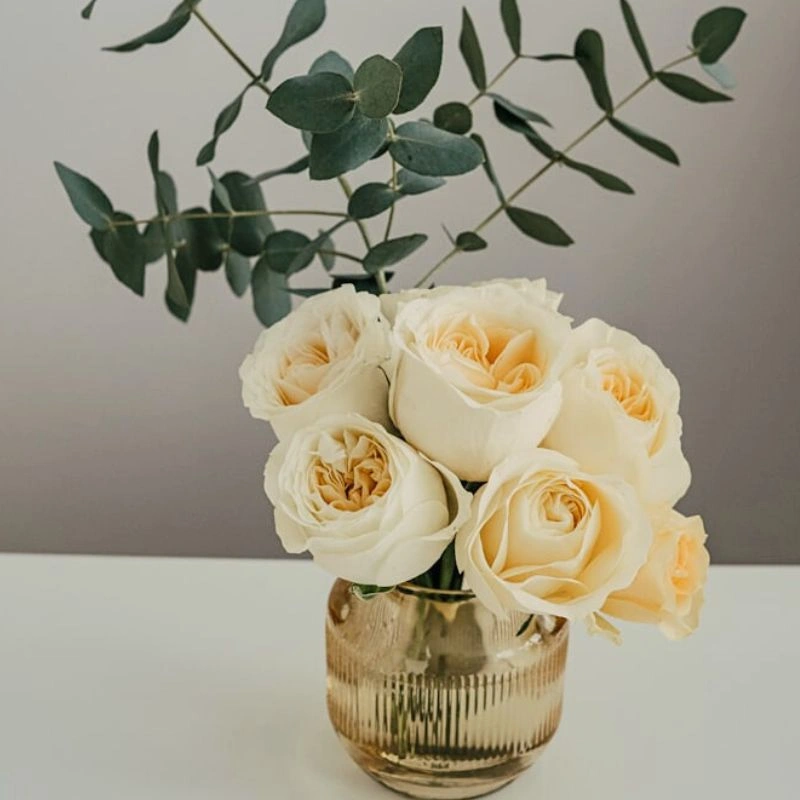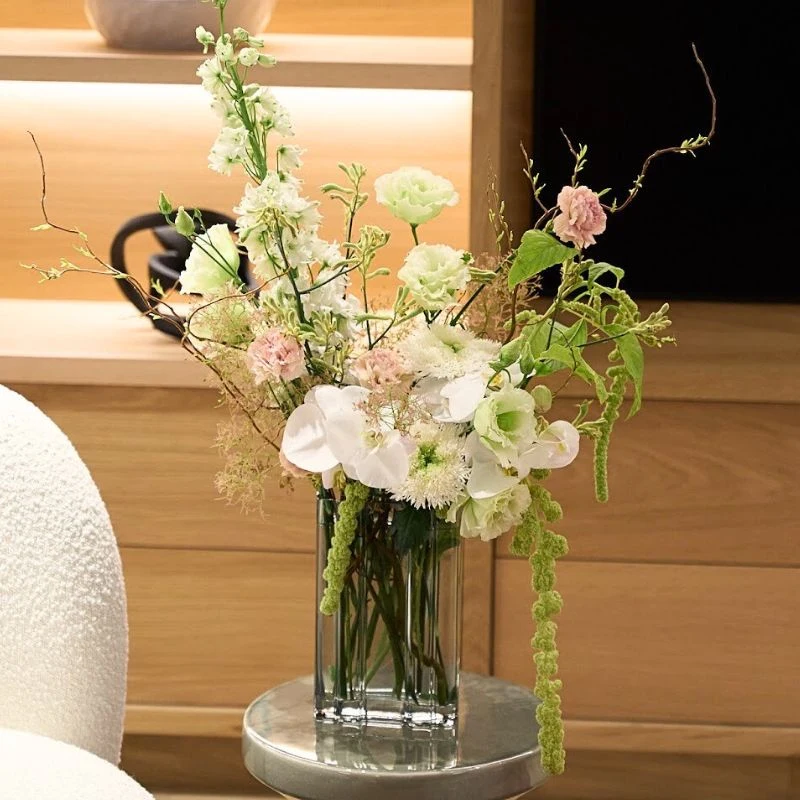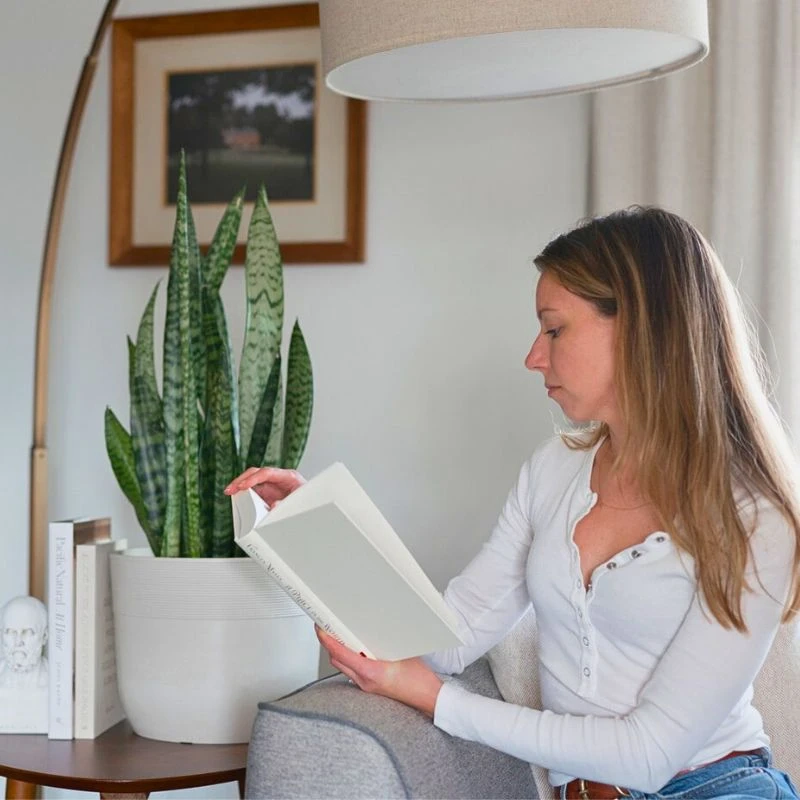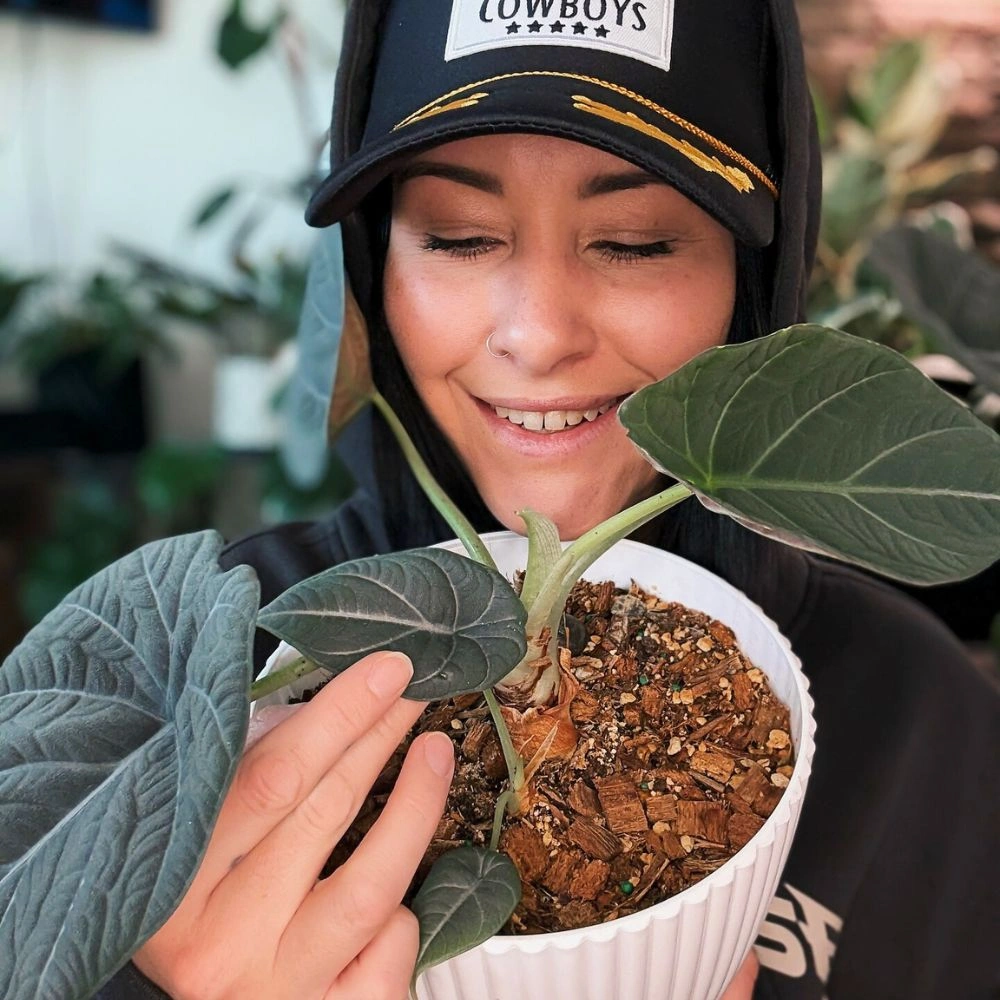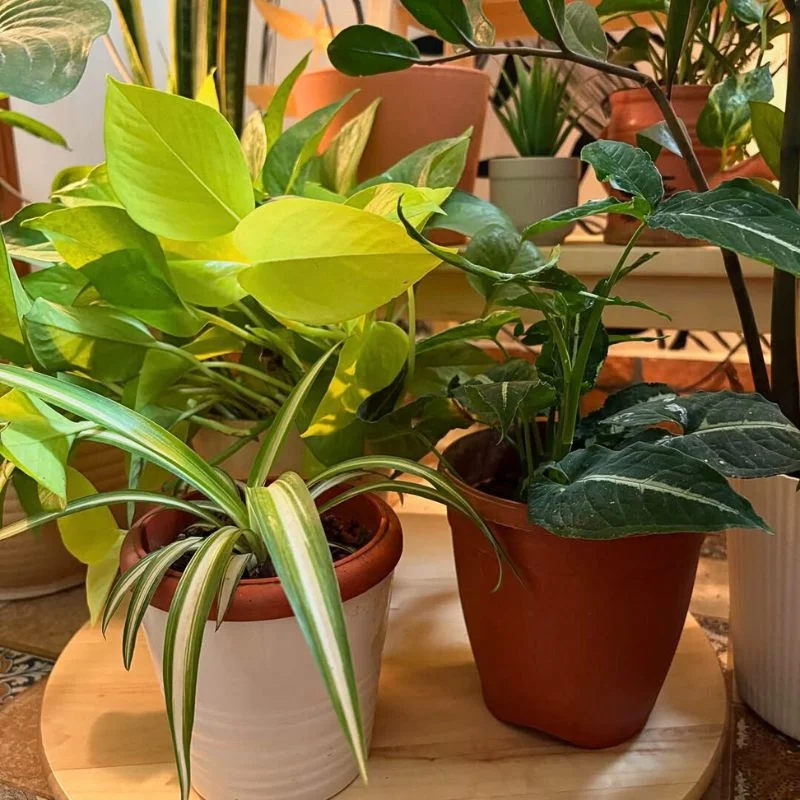A flamboyant plant with relatively fewer needs in terms of care, the Calathea roseopicta, quite unlike many extravagantly showy others, is a houseplant that prefers to tread in quiet drama, without so much of the fuss that many others demand. A charmer from the humid shadows of the tropical rainforests, this plant thrives not in so much grandeur but in subtlety, demanding little beyond the mimicry of its jungle origins: filtered light, some warmth, some humidity, some moisture, and of course some care.
This horticultural beauty simply appeals with its velvety leaves adorned in mesmerizing patterns, whether in pink, silver, green, or burgundy, each leaf resembling a carefully hand-painted artwork. Plus, its colorful foliage performs a fascinating daily ballet, raising and lowering the leaves in rhythm with the sun's passage across the sky; opening outward at dawn, and folding inward at dusk. While that, in a nutshell, would seem like all that the Calathea Roseopicta is about, there is more to this exceptional houseplant.
The Enchanting World of Calathea Roseopicta
Commonly known as the Rose Painted Calathea, the Calathea roseopicta houseplant belongs to the Marantaceae family, known for its assortment of prayer plants. Botanically, some sources now classify it under the genus Goeppertia (Goeppertia roseopicta), though it remains widely recognized by its traditional name.
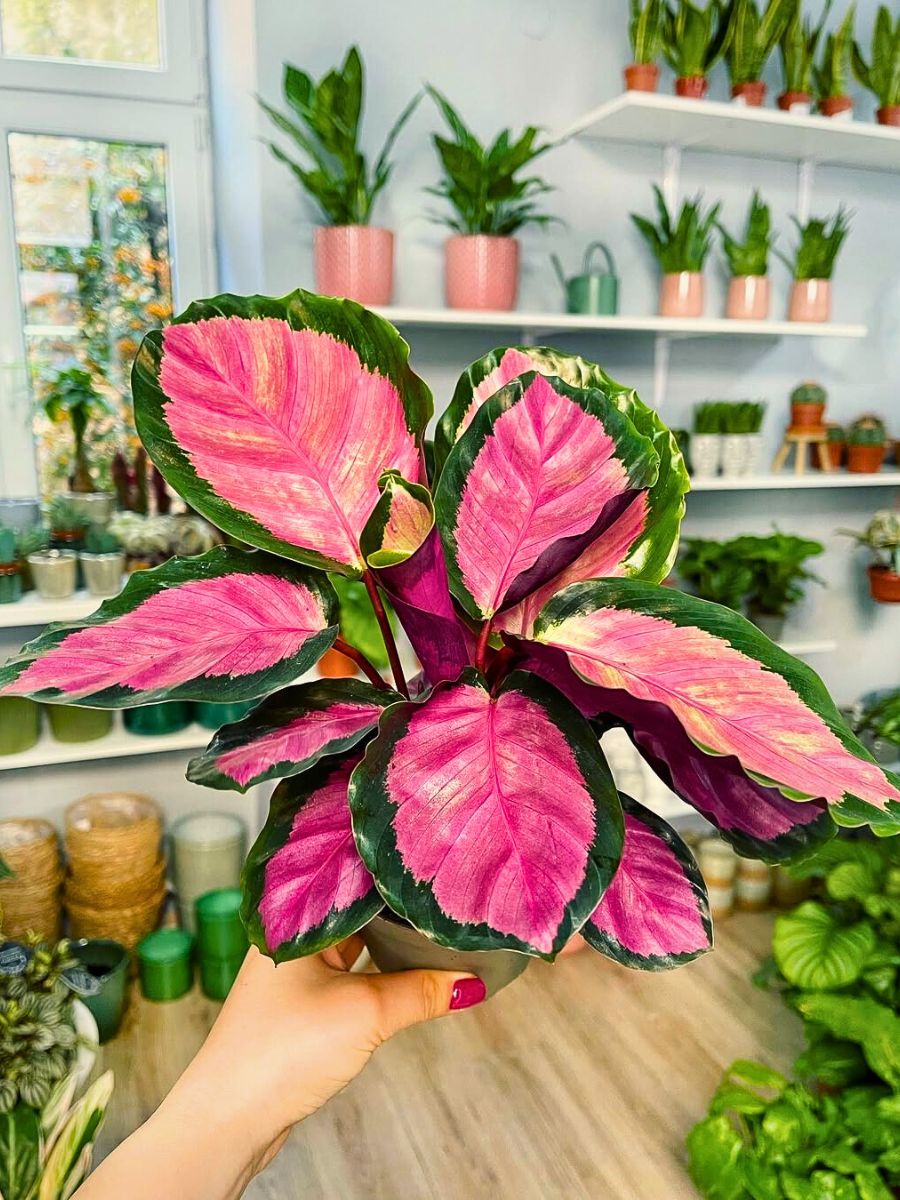
This magnificent specimen originated in the Equatorial rainforests of South America, particularly thriving in the lush undergrowth of the tropical jungles of Brazil, Ecuador, and northern Peru, where it adapted perfectly to the filtered light conditions underneath the dense forest canopy. In its natural habitat, the Calathea roseopicta displays an upright, clumping growth habit, reaching heights of about 20 to 50 inches.
The plant's most distinctive feature is its striking oval leaves: dark green foliage dramatically highlighted with rosy pink and silvery green markings that recreate patterns resembling colorful feathers or peacock plumes. Adding to its allure, the leaves’ undersides reveal a stunning reddish-maroon hue, providing an additional color aspect when viewed from different angles. In its habitat, this tropical beauty grows from underground rhizomes, which act as its water and nutrient reservoirs during drier periods.
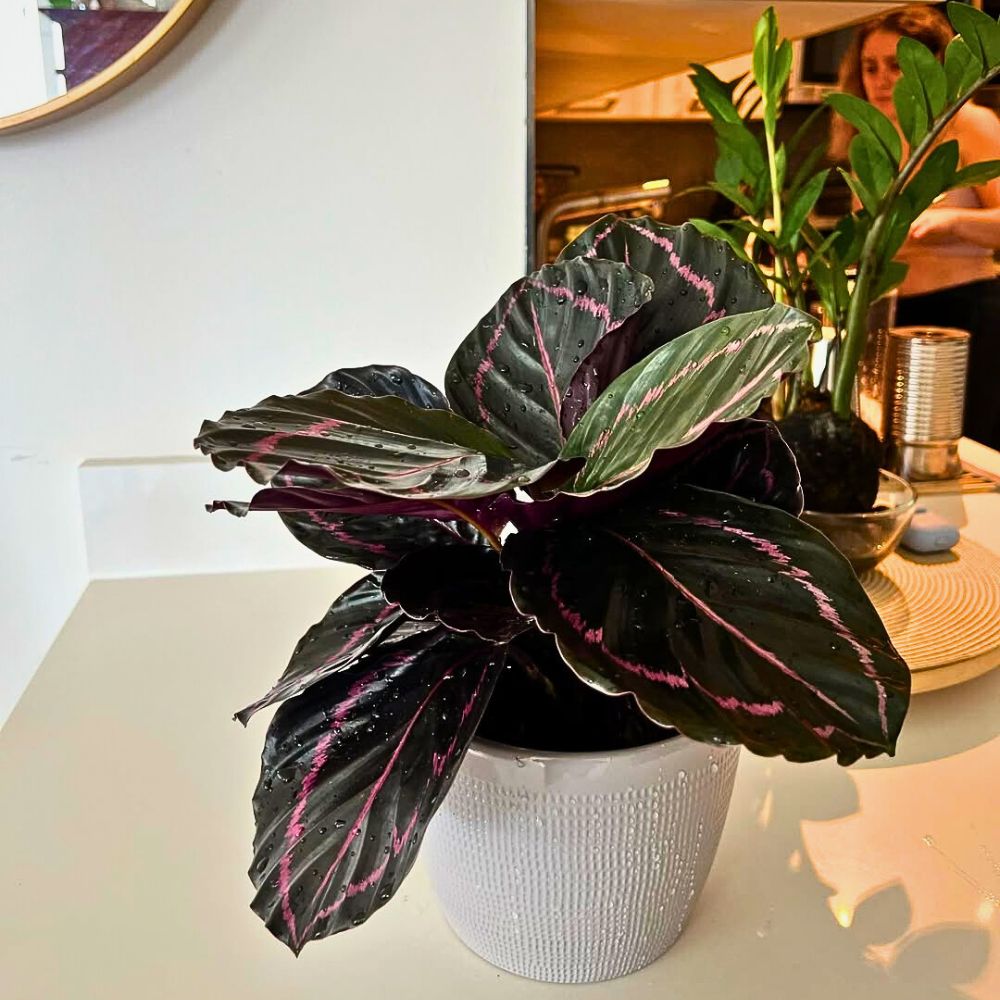
Captivating Calathea Roseopicta Varieties That Offer Diverse Palettes
The Calathea roseopicta family boasts cultivars as diverse as the rainforest itself. Aside from the classic Calathea roseopicta, there exist numerous other hybrid cultivars of this plant that dazzle with their unique traits. For those, perhaps, seeking to infuse their living spaces with tropical elegance and natural stylishness, the various cultivars, including the richly colored Calathea roseopicta 'Crimson'—also called 'Rosy'—, the compact Calathea roseopicta 'Little Princess', the striking Calathea roseopicta 'Angela', and the eye-catching Calathea roseopicta 'Cora', among others, offer a range of possibilities for even the most astute plant collector. Each of these cultivars, unique from the other, brings distinctive touches of exotic beauty, which creates quite a spectacle when perceived.

The Majestic Calathea Roseopicta Crimson
The Calathea roseopicta 'Crimson' (sometimes called 'Rosy') enthralls with its striking color contrast. This variety showcases deep green leaves with prominent crimson-pink accents radiating from the midrib and encircling the leaf edges. Native, just like its peers, to South America's rainforests, this variety requires the same loving care as other Calathea roseopicta types but rewards with particularly vivid coloration that could serve as a focal point in any indoor jungle or interior garden collection.
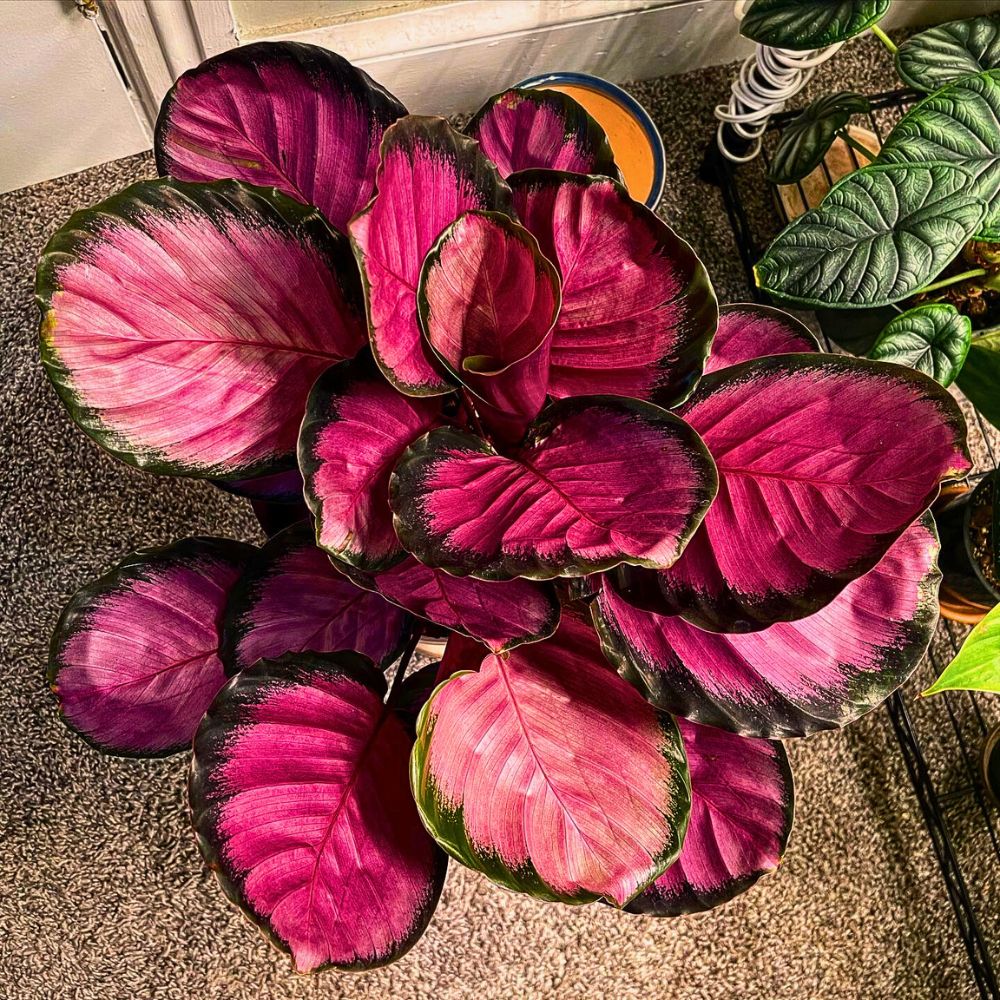
The Charming Calathea Roseopicta Little Princess
For those with limited space, the Calathea roseopicta 'Little Princess' offers a more compact alternative without sacrificing visual impact. This stunning variety features rounded leaves that develop a mesmerizing deep purple hue as they mature. Most distinctive are its vivid, wide pink bands encircling each leaf's edge, creating the look of artistically painted borders. This cultivar maintains the characteristic prayer-plant behavior, gracefully folding its leaves at night and unfurling them with the morning light, a daily display of natural movement that adds dynamic energy to indoor plant landscapes.
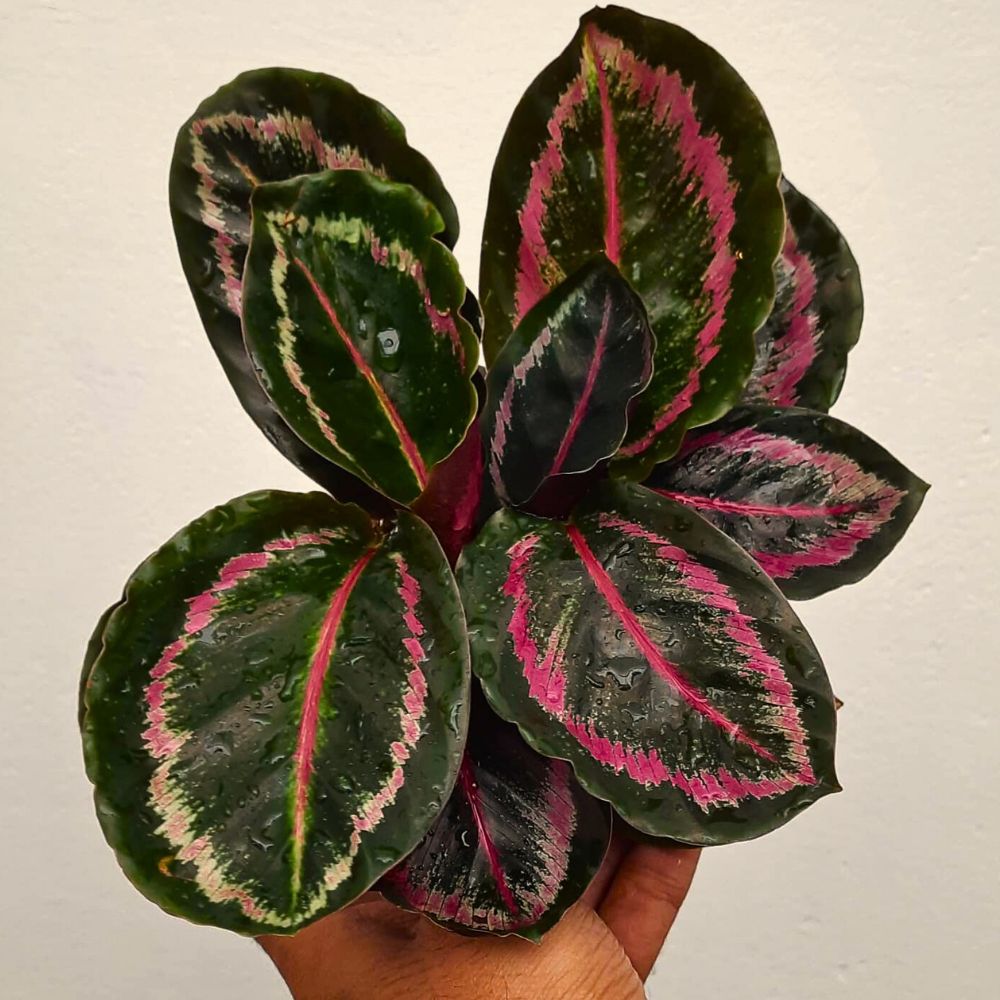
The Elegant Calathea Roseopicta Angela
The Calathea roseopicta 'Angela' presents a refined aesthetic with its elaborate leaf patterns. This particular cultivar displays dark green stripes that radiate elegantly from a delicate pink midrib, transitioning gradually into a refined double-toned margin featuring light green and pink. As its leaves mature, the pale edging evolves into rich dark green, creating quite a visual transformation. Its undersides reveal a vibrant maroon-pink coloration, guaranteeing that this variety offers beauty from every angle.
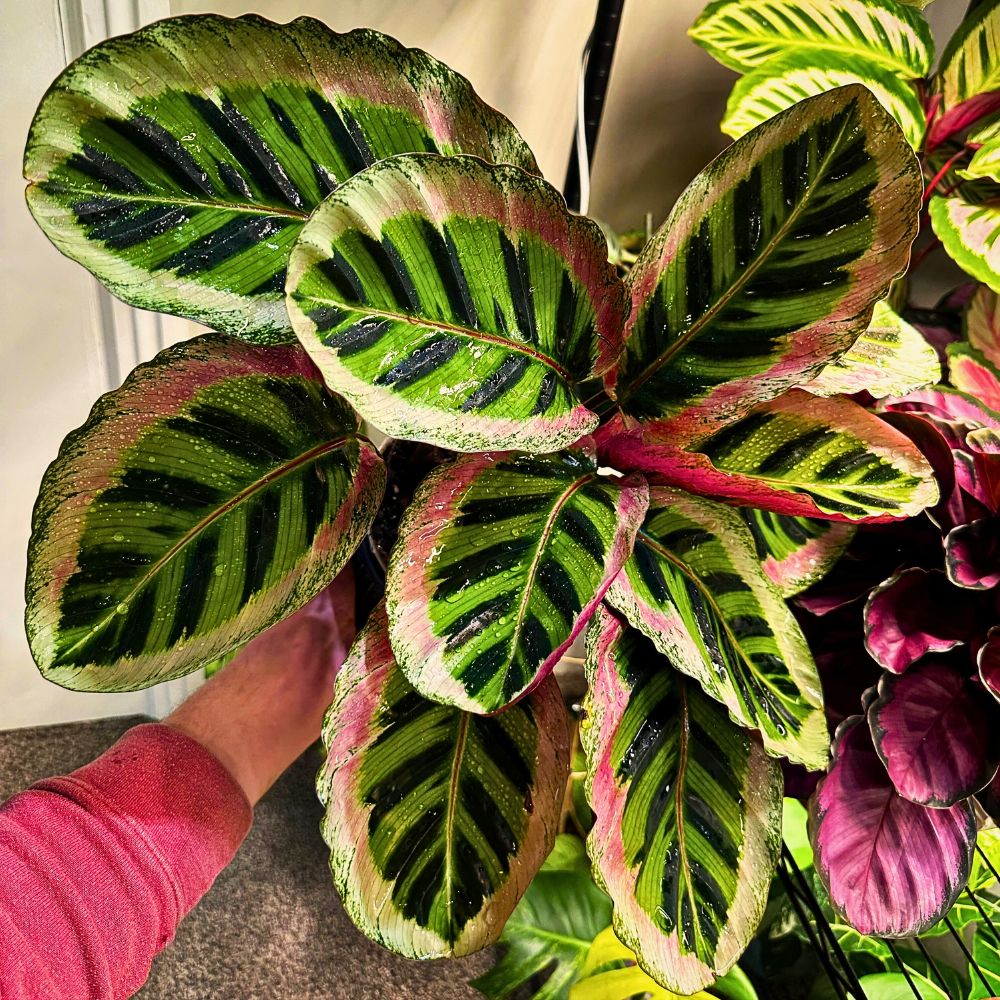
The Radiant Calathea Roseopicta Cora
The collection of notable varieties also features the Calathea roseopicta 'Cora', which enchants with its rich green, oval-shaped leaves adorned with pinkish-purple markings concentrated in the center. Sometimes referred to as the peacock plant or rattlesnake plant, Calathea roseopicta 'Cora' exhibits patterns reminiscent of a peacock's feathers or a rattlesnake's distinctive markings. Away from its ornamental value, this variety excels in air purification, absorbing toxins from indoor environments, making it both beautiful and practically beneficial.

Understanding Calathea Roseopicta Cultivation in the Home
Successful Calathea roseopicta cultivation encompasses everything from creating an environment where these tropical beauties can truly thrive to implementing their basic care routine. While it is easily cultivatable in the home, its soul remains tethered to its rainforest habitat, meaning it demands environments and conditions that simulate the warmth and humidity of its original birthplace. These conditions should be coupled with other routines that enable its ideal growth and development.
Essential Calathea Roseopicta Care for Thriving Plants
Getting the gist of how to care for Calathea roseopicta guarantees that these tropical beauties flourish in domestic and indoor settings. These plants, as noted, require specific conditions that are similar to their native rainforest understory habitats.
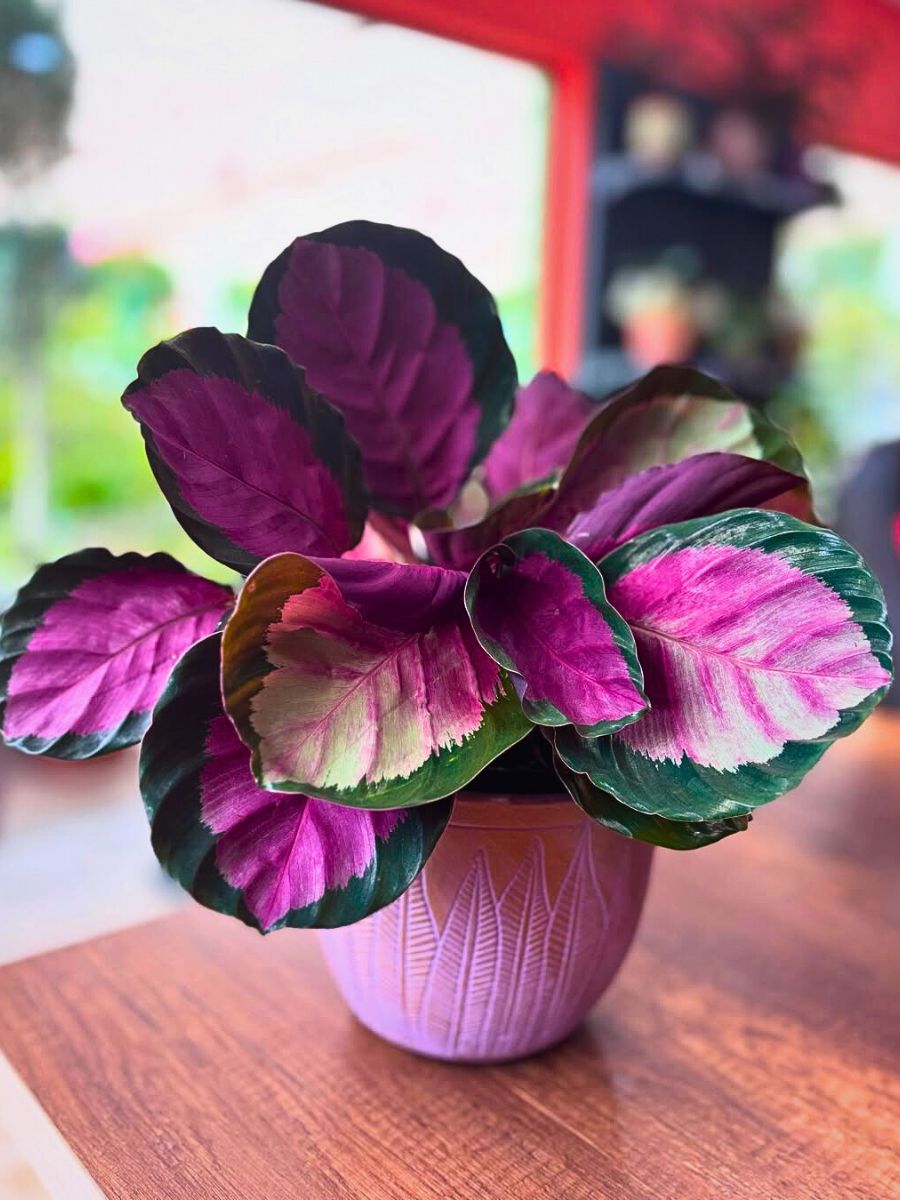
Light Requirements
Light, the primary variable, must be bright yet indirect, akin to the dappled glow of the Calathea roseopicta’s natural surroundings; the plant essentially thrives in bright, indirect light conditions. While it could tolerate and still grow in shadier areas, providing adequate filtered light enhances its vibrant foliage patterns and overall health. Direct sunlight must be avoided as it can scorch the delicate leaves, causing almost permanent damage and diminishing the plant's ornamental value.
Water and Humidity Needs
Consistent moisture is also crucial for Calathea roseopicta care. The soil should remain evenly moist but never soggy or waterlogged. Water it when the top 2 cm of soil begins to dry, adjusting the frequency according to seasonal needs and environmental conditions. Filtered or rainwater is ideal, as tap water’s minerals can accumulate, leading to leaf tip browning, which is more like a silent protest against chemical intrusion. This tropical beauty also craves high humidity levels of between 60-80%, making it ideal for bathrooms or kitchens. In drier environments, consider using humidifiers, pebble trays, or regular misting to prevent brown leaf edges, a common sign of insufficient humidity.
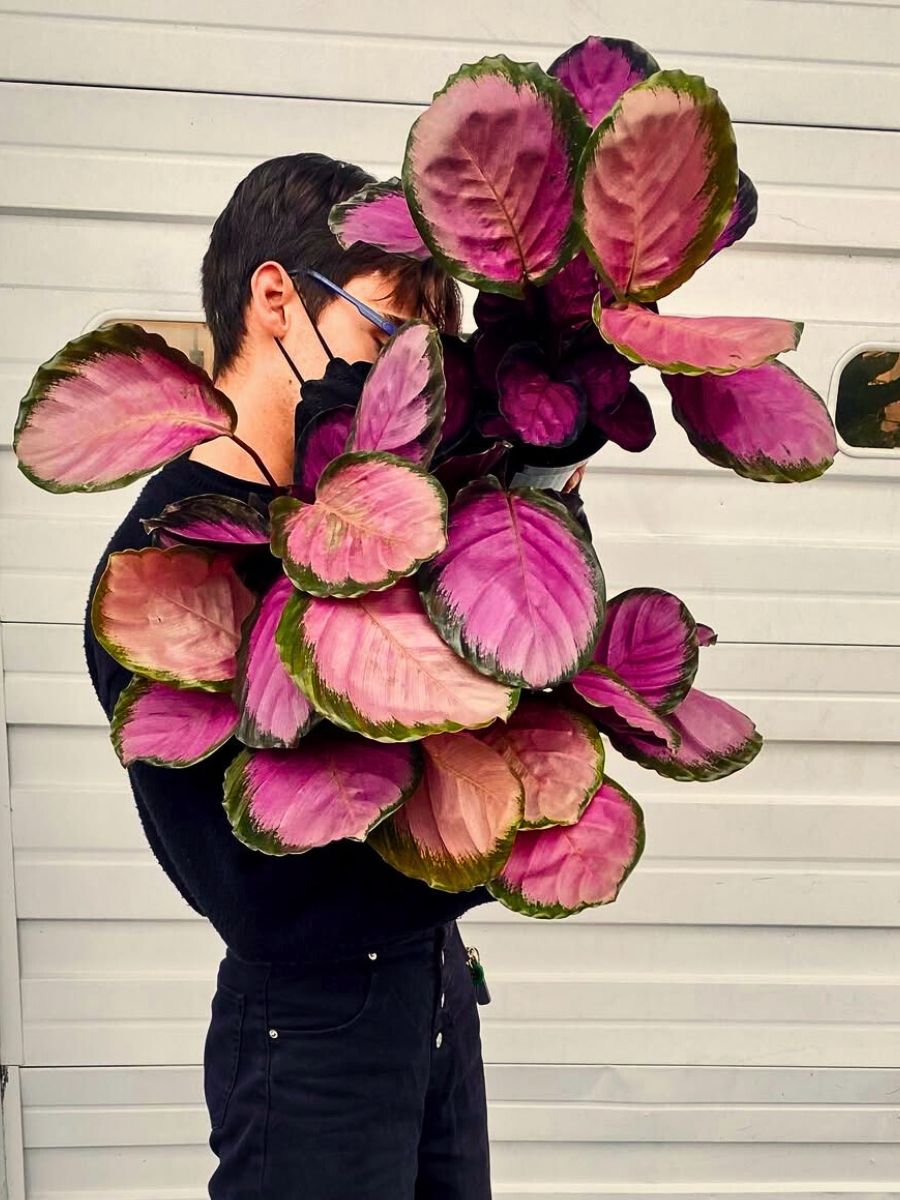
Temperature and Soil Requirements
For successful Calathea roseopicta cultivation, one should maintain temperatures between 18-25°C, avoiding exposure to cold drafts or temperatures below 15°C. These tropical plants thrive in well-draining, fertile, loamy soil with a slightly acidic to neutral pH (5.5-6.5). A high-quality peat-based potting mix enriched with perlite creates the ideal growing medium, providing the perfect balance of moisture retention and drainage. In essence, a mix mimicking the forest floor’s spongy richness allows roots to breathe while staying hydrated, which is crucial for preventing root rot—a common enemy of overzealous waterers. Feed it with a slow-release fertilizer at planting time, then supplement with diluted liquid fertilizer during the growing season.

Additional Calathea Roseopicta Requirements
In addition to these, one should also position the plant away from heating or cooling vents, which create temperature fluctuations and dry air conditions that these sensitive plants despise. Consider grouping multiple tropical plants together to create natural humidity pockets that benefit all. Seasonal adjustments are, likewise, essential for year-round health. And, during winter months, reduce watering frequency but maintain humidity levels to counter the effects of indoor heating. In warmer seasons, increase vigilance against pests like spider mites and mealybugs, which are attracted to the lush foliage, particularly when stressed by improper growing conditions.

How to Propagate Calathea Roseopicta
Growing one’s collection of Calathea roseopicta can be done through propagation. This is an activity that many plant parents can easily do by themselves, and with satisfying results. The division method is the most reliable technique for propagating Calathea roseopicta successfully.
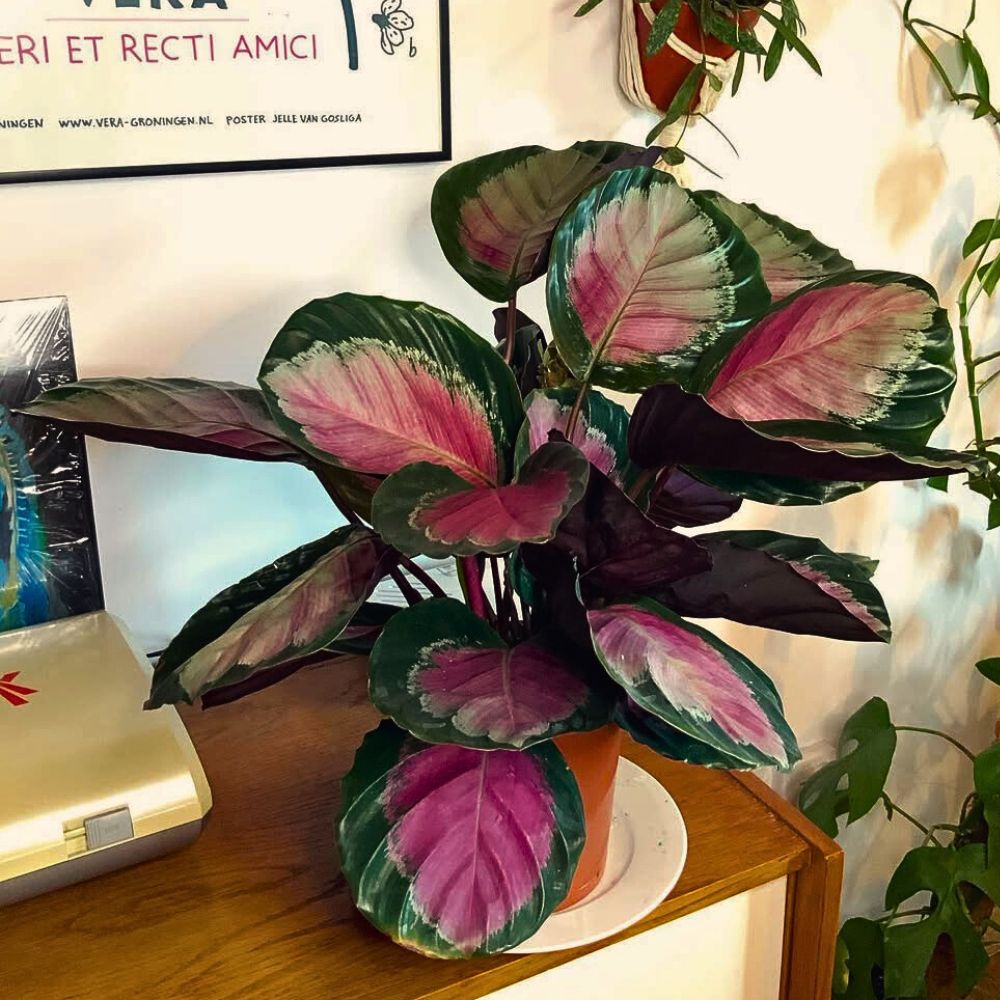
To start with, the best timing for Calathea roseopicta propagation is during spring or early summer when the plant enters its active growth mode. One should begin by thoroughly watering the plant 24-48 hours before division to reduce root stress during the process. Then, carefully remove the plant from its container and gently untangle the root ball, identifying natural division points where the plant forms separate crowns.
Using clean, sharp tools, divide the rhizome, ensuring each section retains healthy roots and at least 2-3 leaves. Plant each division in a separate suitable container with fresh potting mix, water thoroughly, and place in a warm, humid location with filtered light. During the establishment period of 3-4 weeks, maintain consistent moisture and higher humidity to encourage successful root development.
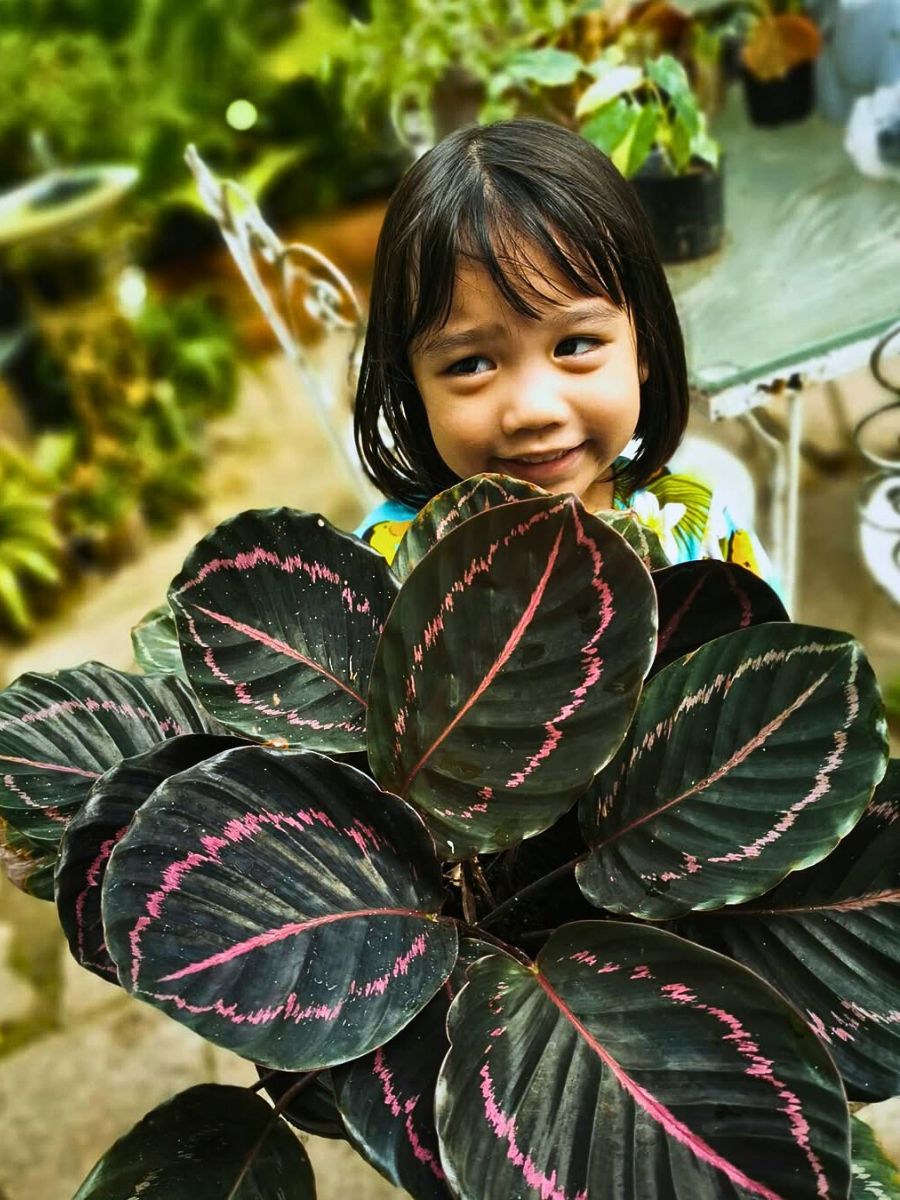
Bringing Tropical Elegance Indoors by Decorating With Calathea Roseopicta
The Calathea roseopicta is an ideal plant for different design and decorative schemes. It could serve as a stunning focal point in interior design, enhancing the look and feel of indoor spaces with its vibrant foliage and architectural presence. While at this, it also offers air-purifying benefits like trapping dust and toxins, and ensuring cleaner indoor air as well.
In living areas, one could consider placing these tropical beauties on side tables or plant stands where their elaborate leaf patterns can be appreciated at eye level. In such cases, their dramatic coloration complements both contemporary and bohemian décor styles, particularly when paired with natural materials like rattan, bamboo, or light wood elements.
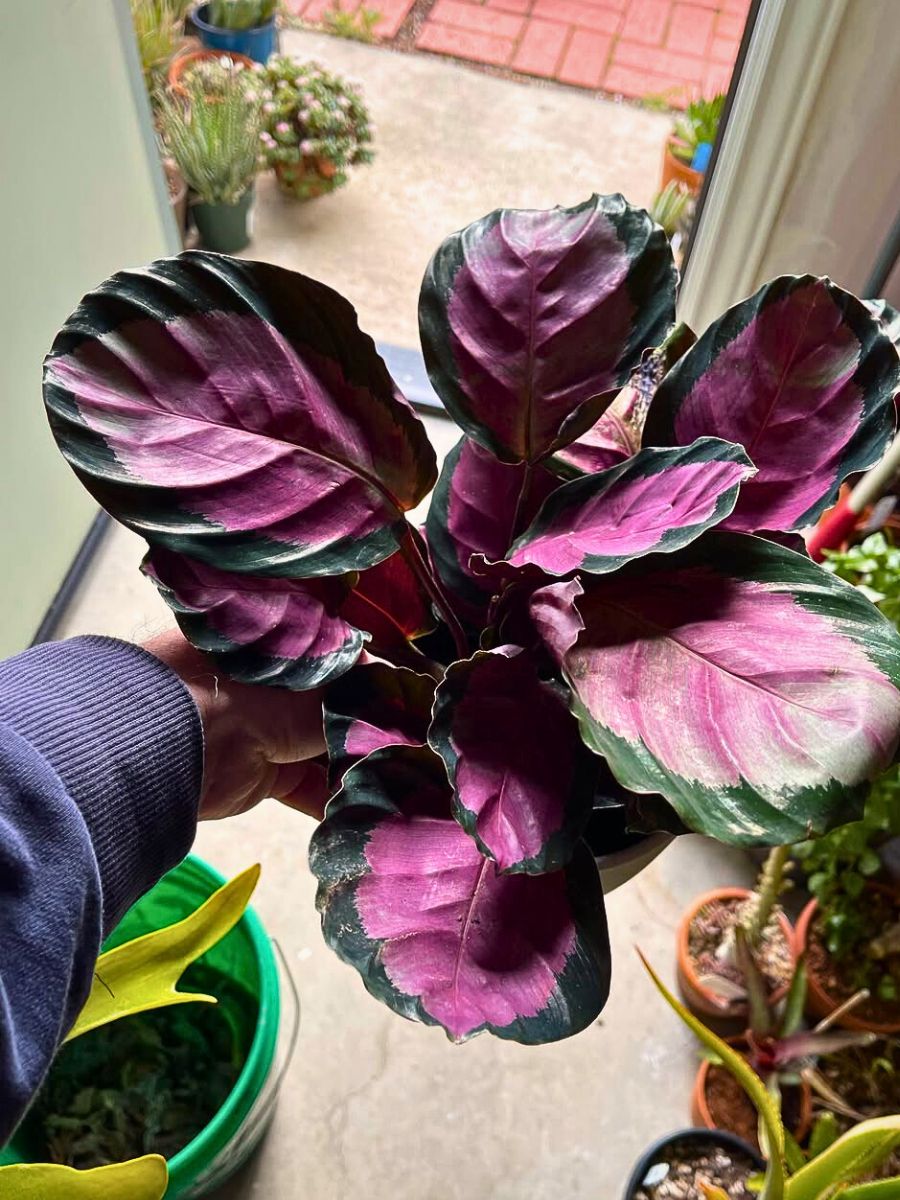
In bathrooms, the Calathea roseopicta is still ideal as it thrives in the natural humidity while adding a spa-like luxury with minimal effort. For maximum design impact, one may consider clustering different Calathea roseopicta varieties together, for instance, pairing the bold Calathea roseopicta 'Crimson' with the delicate Calathea roseopicta 'Little Princess' and others to create an attractive textural and color contrast that draws the eye.
For more botanical drama in the indoor spaces, one may consider pairing the Calathea roseopicta with neutral-toned pots to let its foliage shine, use it as a centerpiece in living rooms, provide office Zen by brightening workspaces with its calming presence under LED grow lights, or cluster multiple varieties for a tropical vignette. Even still, its air-purifying qualities will make it ideal for bedrooms, where it enhances restful sleep.
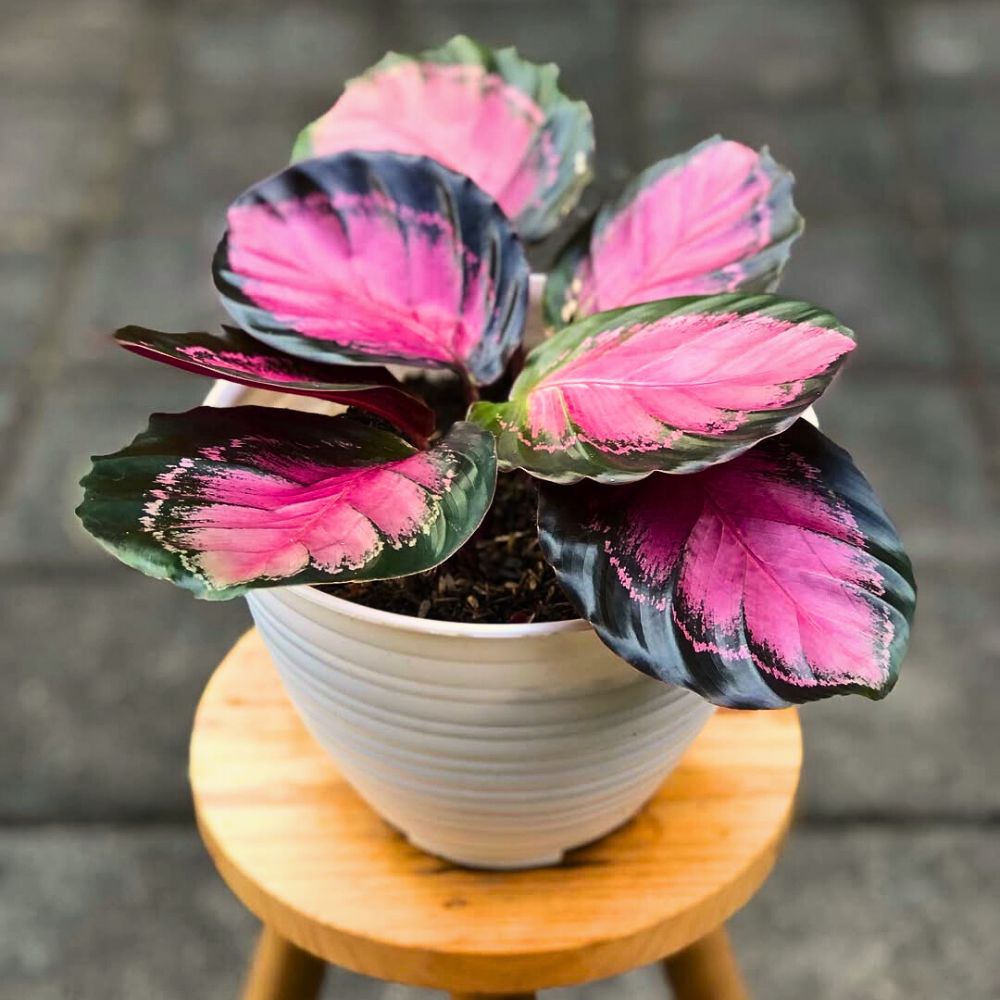
Aside from the visual appeal and its many practical benefits, growing and caring for the Calathea roseopicta, just like any other houseplant, promotes and nurtures mindfulness—the day-to-day routine of watering, misting, tending, and observing the plant as it grows anchors one in the present moment. Such is what guarantees that this showy and flamboyant houseplant gets all the attention it attracts.
Feature image by @margroot, header image by @theplantfinder

